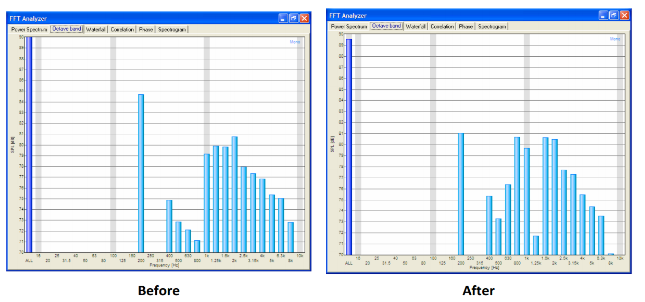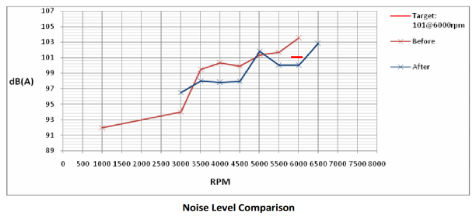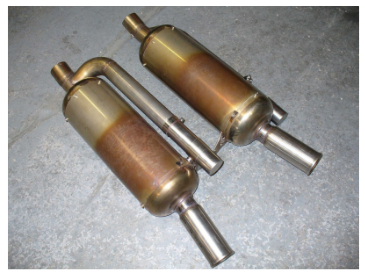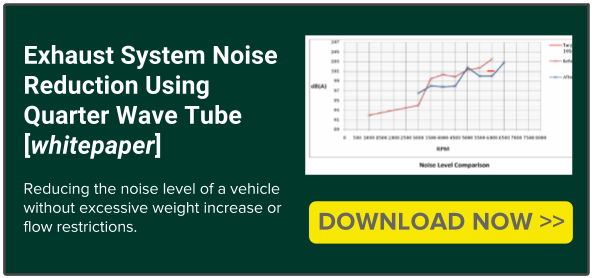-
Exhaust System Noise Reduction Using Quarter Wave Tube (part 4 of 4)
Last week we looked at the practical reduction process and measurements behind each stage of the process. Click Here to see last weeks post.
Physical Testing
The next stage involved the production of two adjustable length QWTs that would fit into the system just before the silencers. Through a process of testing, data capture and analysis it was possible to tune the lengths of the QWTs so that they were most effective at the 200Hz band. This resulted in an overall SPL below the target on the test setup. Once the theory had been proven, a final set of silencers with incorporated adjustable QWTs were produced.
These were fitted to the vehicle and “tuned” to the correct length.Results
The one third octave analysis before and after are shown below. Note the vertical scale is zoomed to the area of interest.
The results show that there was a significant reduction in the
200Hz frequency band and that the higher frequency bands were not
increased.
Discussion
The basis of this work was the theoretical method for determining the overall SPL of a noise source based on the individual one-third octave BPLs. The results show that the reduction in the key BPL is also seen as a reduction in the measured SPL, as suggested by the theory. The final results met the objective of reducing the sound level of the vehicle to below 101dB(A) at 6000rpm suggesting that this approach was appropriate in this respect. Furthermore, the nature of the Quarter Wave Tube was such that it did not cause any restriction to the flow of exhaust gasses and was a relatively lightweight, compact solution.
Further research to investigate the effects of positioning and alternative geometry may have led to increased effectiveness of the system, however the time constraints of the project did not allow this.
The noise levels measured with the sound level meter are shown below.
Conclusion
Frequency analysis software was used to identify the structure of the vehicle tailpipe noise. Quarter Wave Tubes were used to attenuate the Band Pressure Level of an identified peak at 200 Hz. The overall Sound Pressure Level of the vehicle was reduced to below the target 101dB(A) at 6000 rpm, without significant weight increase or flow restriction.
This has been the last week of our four week series where we have shown and explained the theory behind our latest project. Download the full length whitepaper (click here).
- T +44 (0) 1327 261797
- E sales@btbexhausts.co.uk

